Hidden gems is a mobile scavenger hunt app. The app is designed for people who want go off the beaten path and (re)discover the city they are in together with friends and family. The functionalities will give the users a way to immerse themselves in their city by playing and creating scavenger hunts.
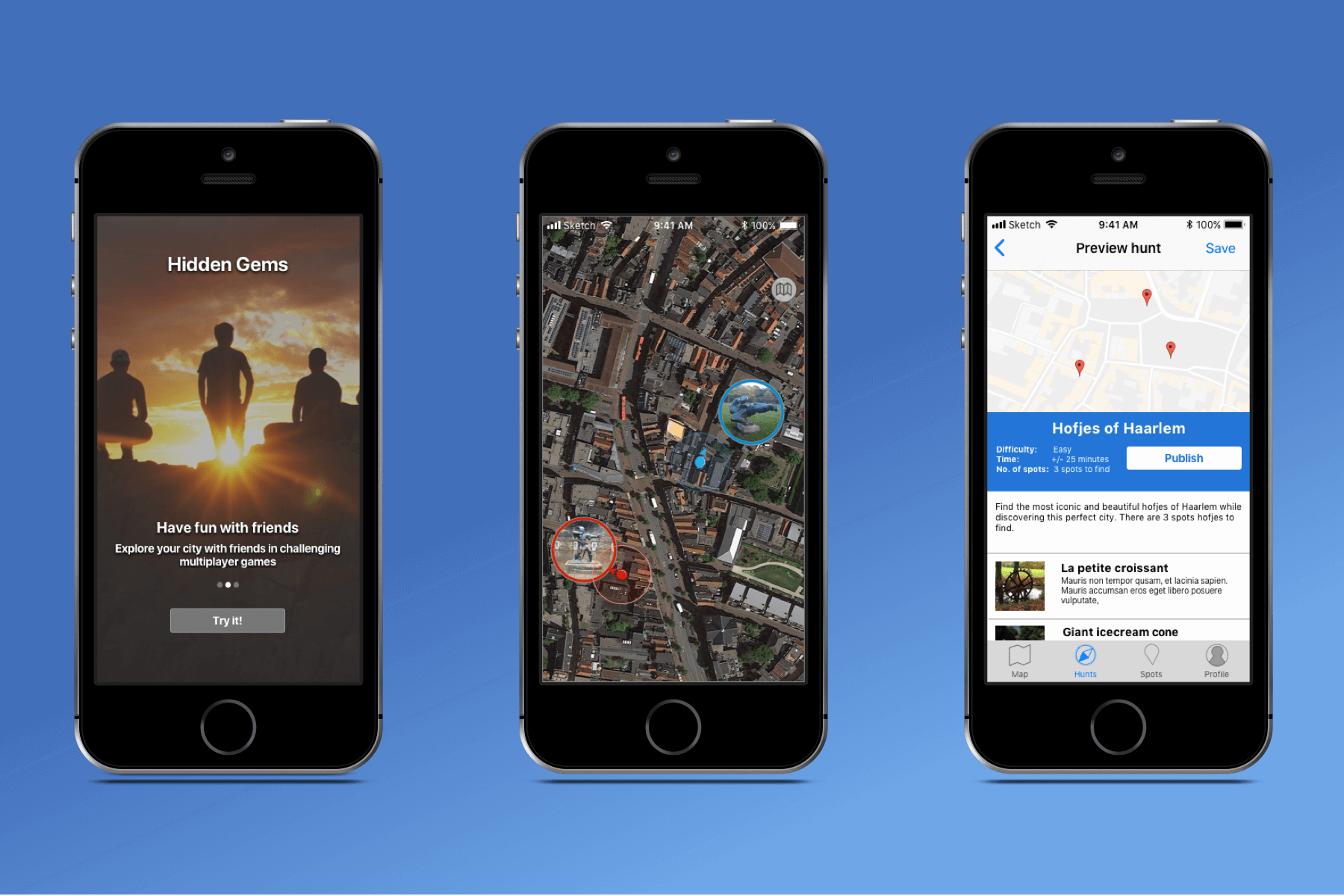
I started by researching the topic: What are scavenger hunts? What would users expect out of a scavenger hunt app? I quickly realised that when I was playing a scavenger hunt, I wanted to discover the city I'm in and go to new places. But some scavengerhunt games, like Pokémon Go, always seem to take you to the same places.
Based on this, I came up with the following problem statement:
Our scavenger hunt app users need a way to quickly set up a new, fun, and interesting scavenger hunt in their area with locations that really spark their interest because they wish to go off-the-beaten-path and (re)discover the area they’re in together with friends and family in a fun way.
We will know this to be true when we see how many scavenger hunt app users are using our app to explore the area they’re in.
To get more insight on what a scavenger hunt app could be, a competitive analysis was done on two scavenger hunt apps, Klikaklu and Geo-caching. By finding out their key objectives, strategies, strength and weaknesses, I was able to understand the market I was designing for better.
User interviews were conducted with four different persons. The goal was getting to know what kind of places they have interest in and what their experiences are with playing and creating scavenger hunts. All the information I got during the user interviews was mapped and sorted using affinity mapping.
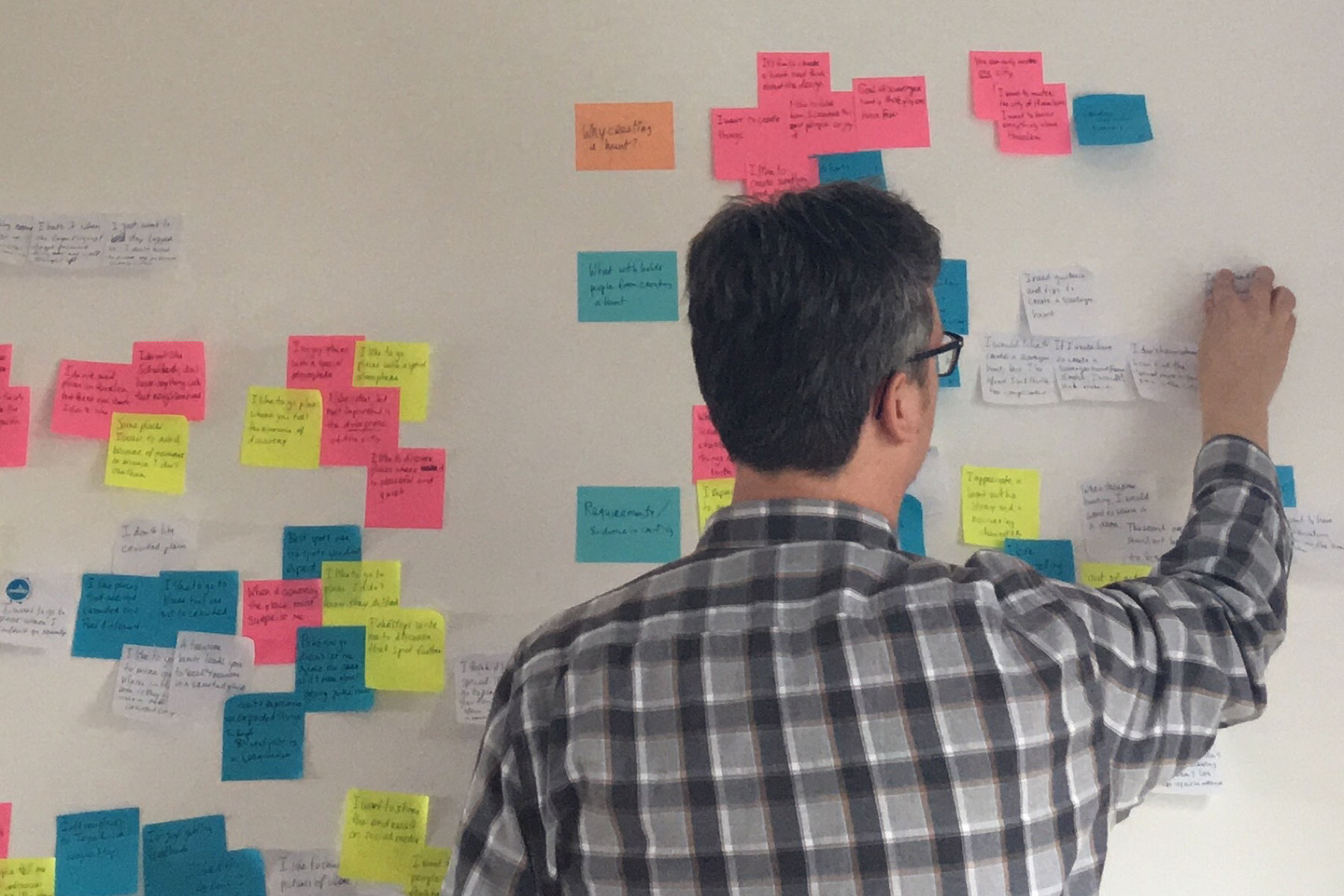
I used affinity mapping to sort and group all the information I got during user interviews.
When you look at the experience that different people have with scavenger hunt apps, there seems to be a hierarchy between the different users. A user that just started using the app could become a more fanatic player in the future. And with the right information on creating a hunt and the right guidance, a fanatic player could eventually evolve into a hunt creator. With this information in mind, I created 3 personas:

The personas I made. Click on the picture to view each persona separately.
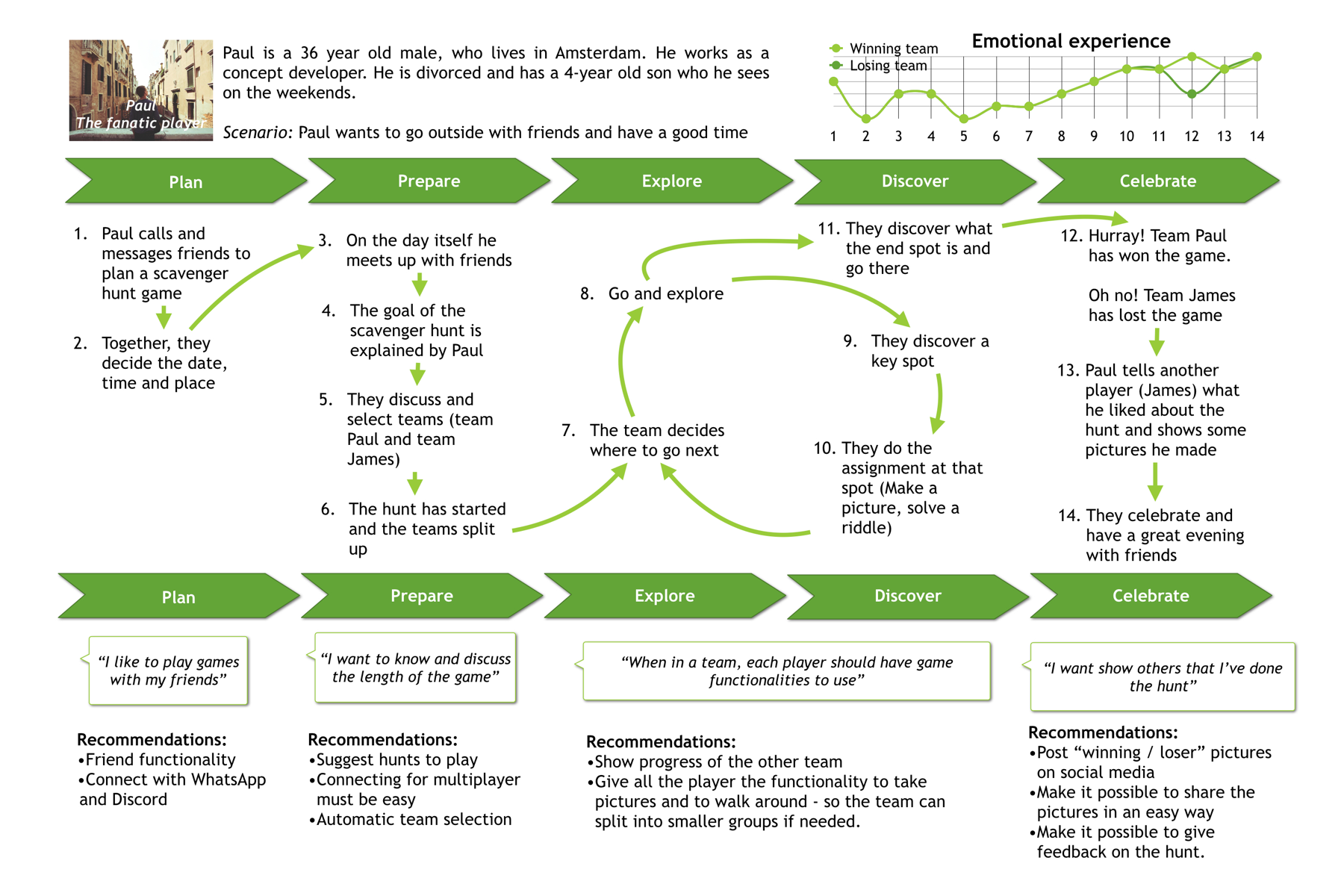
The user journey of a fanatic player. Click on the picture to view all the user journeys.
Our scavenger hunt app users need a way to go off-the-beaten-path and (re)discover the city they are in together with friends and family because they want to be immersed in their own city.
We will know this to be true when we see how many scavenger hunt app users are using our app to explore the area they're in.
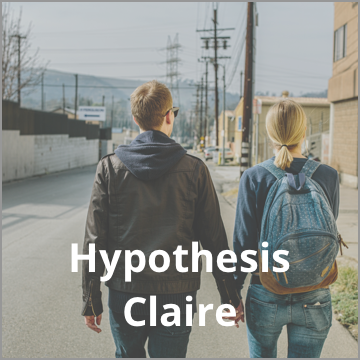
We believe that by creating an “easy exploration mode” for Claire, we will achieve that Claire increases her knowledge on interesting places in the city with 30%

We believe that by creating a finish picture functionality that can be shared on social media for Paul, we will achieve that Paul’s motivation to keep playing scavenger hunts will increase with 20%

We believe that by building a select location functionality for the creation of hunts for James, we will achieve that his capability to create interesting hunts will increase with 25%
With the personas and their user journeys in mind, I created user flows for:
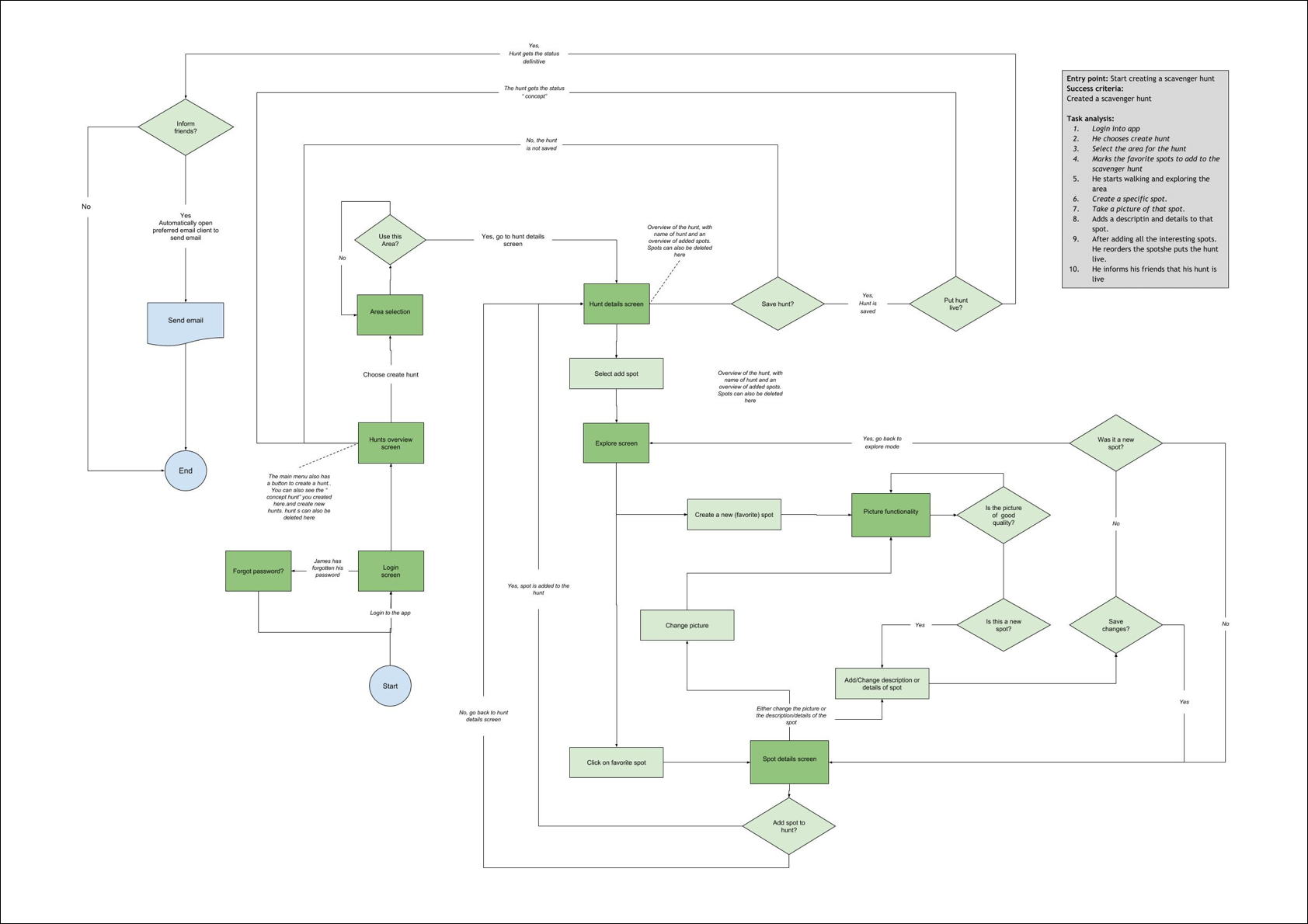
User flow for the feature "Creating a hunt"
Based on the user flows and with the created sitemap in mind, I started creating wireframes on paper. By making quick sketches, it is easy get to see what works and what doesn’t work. Ideas can be easily checked with users and stakeholders. This really helped me to optimize the user flows even further.
The wireframes were constantly refined after getting feedback from users and stakeholders. Mid-fidelity wireframes were made in Balsamiq and worked out further into high-fidelity wireframes in Sketch.
With the high-fidelity wireframes, I created a prototype in InVision. InVision is a really valuable tool, it's easy to use and you can make some complex real-looking prototypes with it. The inspect mode also really stood out to me, this can be a really valuable tools during development!
A moderated in-person usability test was performed with 5 participants. The goal of the test was to see how new users interact with the scavenger hunt app for the first time on mobile. To observe and measure if the users understand the app, it’s value and how to complete most important features: playing a hunt and creating a hunt
The tests led to some valuable insights on navigation in the app. It was difficult for the users to find the menu for playing the scavenger hiunt. The multiplayer hunt made the participants really excited - even though there were some things that didn't work as they liked, they all thought it would be a fun and interesting scavenger hunt game to play.
With all the insights from the user tests and feedback from peers, I reiterated the designs, improving the navigation, the designs and it's accessibility even further.
During the different iterations of the design this scavenger hunt app, I had a lot of contact with potential users. By interviewing them, thinking about the information architecture and user flows, you can quickly scope to an usable product. I really like the prototyping and making the high-fidelity wireframes into a prototype. Invision is a fantastic tool to create a prototype and can be an valuable asset in a development process. Testing the prototype was a great way to gain new insights and to see on what you are designing. It makes it easier to see mistakes in your flow before you're really starting with the development.
I didn't expect the multiplayer hunt to be such a hit, the users were really excited about this. They gave me loads of new ideas to work out for in future iterations and that really motivates me.